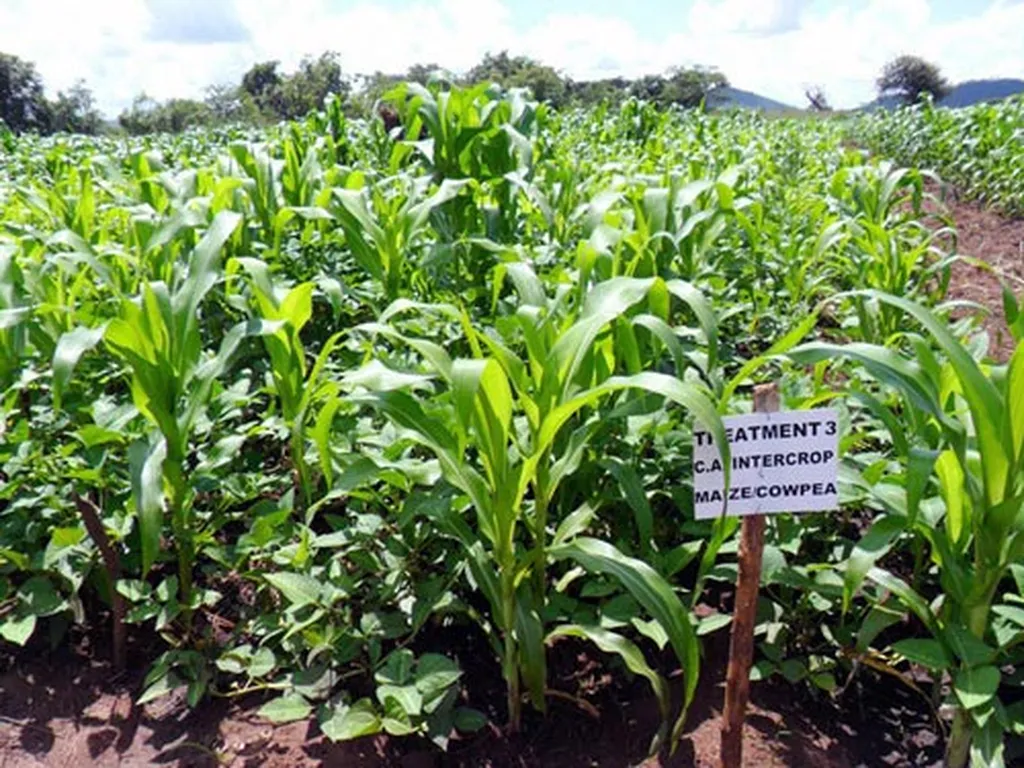In the lush, high-rainfall regions of Northern Zambia, farmers have long grappled with the challenge of boosting maize productivity while maintaining sustainable practices. A groundbreaking nine-year study, led by Blessing Mhlanga of the International Maize and Wheat Improvement Center (CIMMYT) in Zimbabwe, has shed new light on the potential of Conservation Agriculture (CA) to enhance maize yields in these water-rich environments. Published in the ‘Journal of Agriculture and Food Research’ (translated as ‘Journal of Agricultural and Food Research’), the research offers compelling insights that could reshape farming practices and benefit the broader agricultural sector.
The study, which compared three CA-based cropping systems to two conventional tillage systems, revealed that CA can indeed improve maize productivity, particularly in moderate to below-average rainfall years. This resilience under drier conditions is a significant finding, as it highlights the adaptability of CA systems to varying rainfall patterns—a critical factor in the face of climate change.
“CA-based systems generally outperformed conventional tillage, particularly in moderate to below-average rainfall years, demonstrating resilience under drier conditions,” Mhlanga explained. “However, conventional ridge and furrow tillage outperformed CA systems during exceptionally high rainfall years, likely due to better drainage.”
This nuanced understanding of how different cropping systems interact with rainfall variability is crucial for farmers in high-rainfall regions. The study’s findings suggest that while CA can enhance maize productivity, site-specific management strategies are needed to mitigate waterlogging and sustain soil fertility. This could lead to more tailored agricultural practices that maximize yields while minimizing environmental impact.
One of the most striking findings was the complex cubic response pattern of maize grain yield to yearly precipitation. This nonlinear interaction between cropping systems and rainfall underscores the need for flexible, adaptive farming practices that can respond to the unpredictable nature of weather patterns.
Over time, the study observed yield declines indicative of soil fertility depletion. However, CA-based systems slowed this decline compared to conventional tillage, suggesting that CA practices can help maintain soil health over the long term. This is a promising sign for the sustainability of agricultural practices in high-rainfall regions.
The research also highlighted the importance of soil pH and organic carbon levels in determining cropping system performance. Basin planting significantly increased soil pH at various depths, while ridge and furrow tillage led to the highest accumulation of soil organic carbon at deeper levels. These findings could inform future soil management strategies aimed at enhancing soil health and productivity.
As the agricultural sector continues to grapple with the challenges of climate change and the need for sustainable intensification, this study offers valuable insights into the potential of CA practices. By understanding the complex interactions between cropping systems and rainfall variability, farmers and agricultural practitioners can develop more resilient and productive farming systems.
The implications of this research extend beyond the fields of Northern Zambia. As climate-smart agriculture gains traction globally, the findings from this study could inform policies and practices aimed at enhancing agricultural productivity and sustainability in high-rainfall regions worldwide. By embracing CA practices and tailoring them to specific environmental conditions, farmers can not only boost yields but also contribute to the long-term health of their soils and the planet.
In the words of Mhlanga, “This research underscores the need for site-specific management strategies to mitigate waterlogging and sustain soil fertility. Further research is needed to explore soil-water dynamics and optimize CA practices under varying rainfall regimes.”
As we look to the future, the insights gained from this study will be instrumental in shaping agricultural practices that are not only productive but also resilient and sustainable. By harnessing the power of Conservation Agriculture, farmers can adapt to the challenges of a changing climate and secure a more prosperous future for themselves and their communities.

